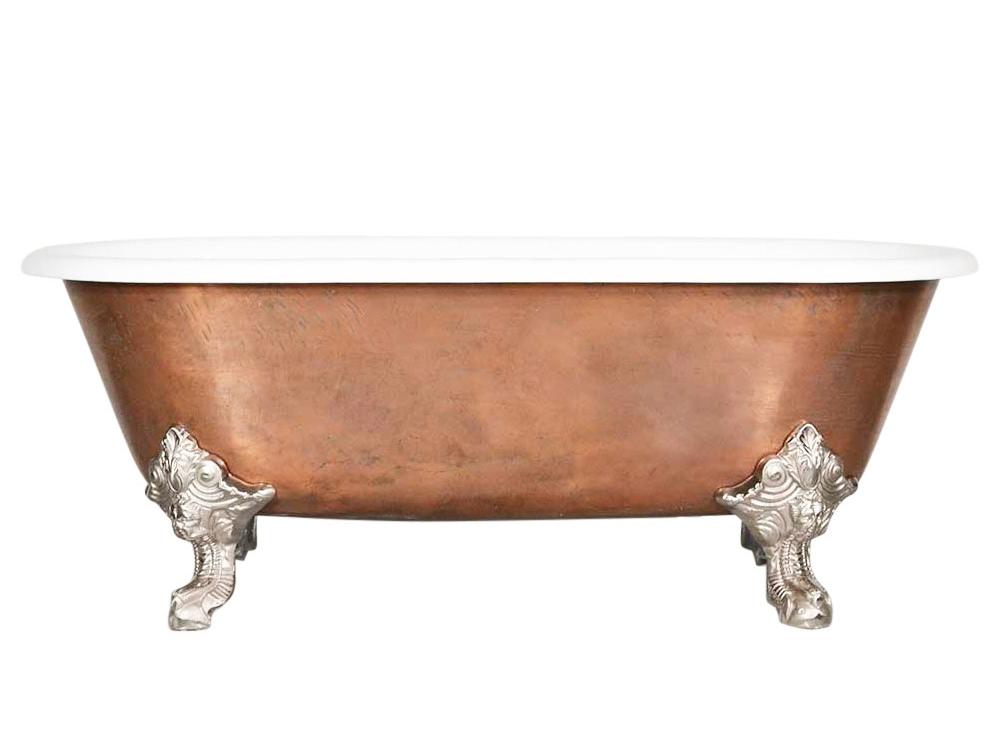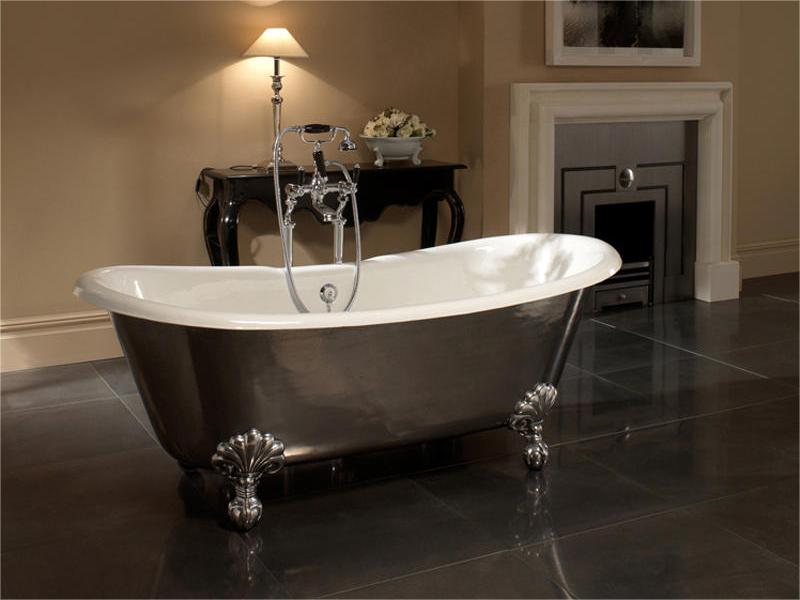Solid Surface vs Cast Iron Bathtubs: A Comprehensive Comparison
Introduction
If you're pondering the choice between solid surface vs cast iron bathtubs, you're not alone.
Many homeowners and bathroom enthusiasts find themselves puzzled by the differences and benefits of each.
In this article, we'll address five key questions to clear up any confusion.
By understanding these points, you'll be better equipped to make an informed decision for your bathroom design.
We will delve into the features of solid surface bathtubs vs cast iron bathtubs, exploring questions such as their value, common problems, and historical background.
We have also done analysis on related topics such as solid surface bathtub manufacturers, solid surface bathtubs vs acrylic bathtubs, Chinese modern freestanding bathtub companies, etc.
Addressing these questions will provide clear answers to ensure that you choose the bathtub that best suits your needs and preferences.

Are Cast Iron Tubs Worth It?
Advantages of Cast Iron Bathtubs:
1.Durability: Cast iron bathtubs are extremely durable and can last for decades, even generations, with proper care. They are more resistant to dents, chips, and scratches than many other materials.
2.Insulation: Once filled, cast iron tubs retain heat well, keeping the water warmer for longer, perfect for long, relaxing baths.
3.Classic Aesthetic: Cast iron bathtubs often have a timeless, classic look that can add elegance and charm to a bathroom. They are particularly popular in traditional or vintage-style designs.
4.Solid Feel: The weight and material of a cast iron tub give it a solid, sturdy feel that some people find attractive compared to lighter, more modern materials.
5.Long-term Value: Due to their durability and classic appeal, cast iron bathtubs can add value to a home, especially at the high end of the market.
Disadvantages:
1.Heavy Weight: The most significant disadvantage is the weight, which can make installation difficult and may require reinforced floors. This increases installation cost and complexity.
2.High Cost: Cast iron bathtubs are more expensive than many other types of bathtubs, both for the bathtub itself and the associated installation costs.
3.Limited Design Options: They tend to be traditional in design and may not suit more modern or eclectic tastes. Additionally, they usually only have limited color options.
4.Cold Surface: Before the water is heated, the surface of a cast iron tub may feel cold to the touch, which may be uncomfortable for some users.
5.Maintenance: While enamel coating is durable, if it does chip or crack, the underlying iron may rust, requiring expensive repairs.
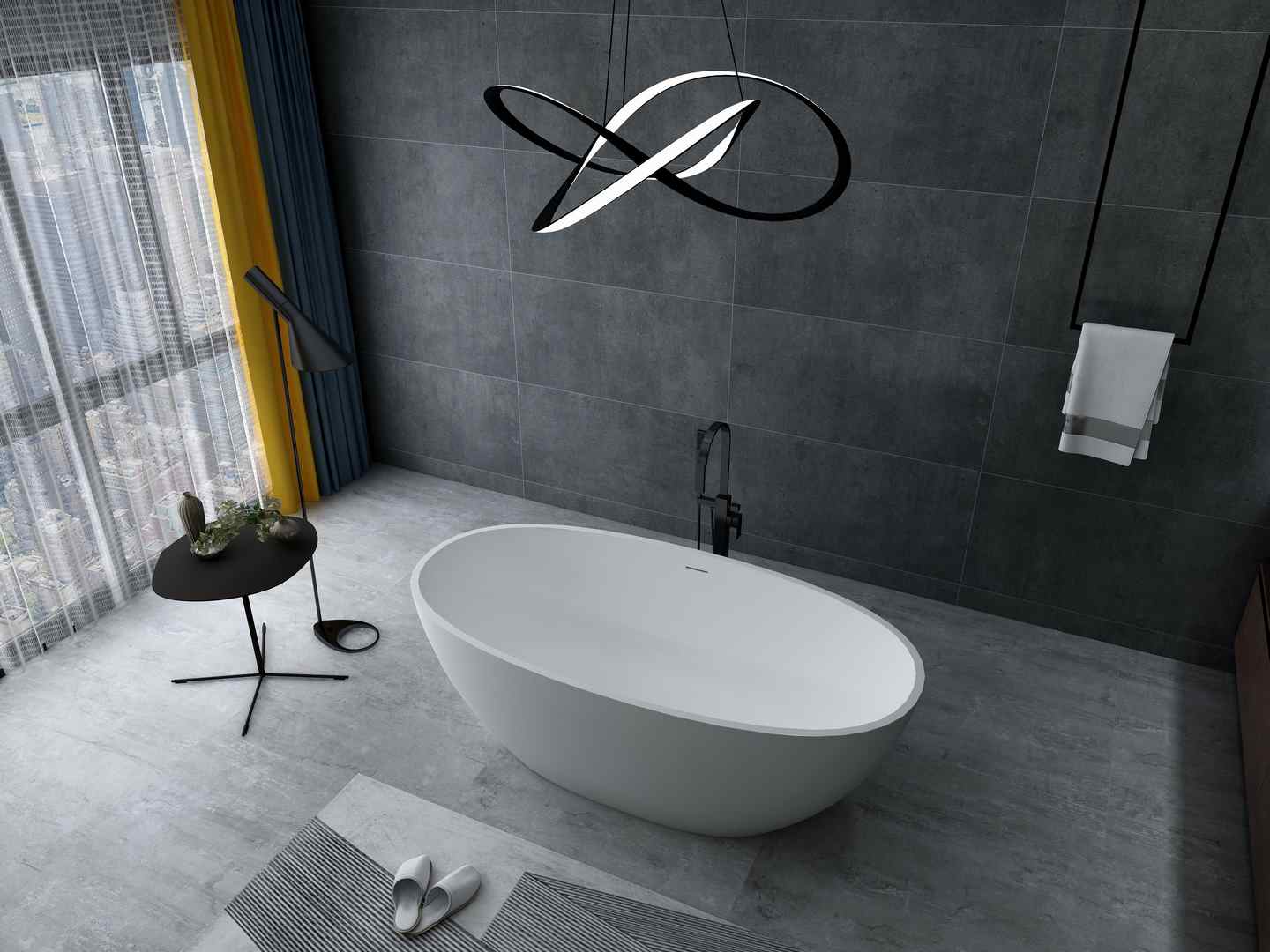
Are Solid Surface Tubs Worth It?
Advantages of Solid Surface Bathtubs:
1.Aesthetics: Solid surface bathtubs boast a seamless, luxurious look and come in various styles and finishes. They can mimic natural stone or have a sleek, modern appearance, making them a popular choice for high-end bathrooms.
2.Durability: Made from a mixture of natural minerals and resins, solid surface bathtubs are very durable and resistant to chipping, cracking, and scratching. Minor scratches can be polished with sandpaper, maintaining their new look over time.
3.Warm and Comfortable: Solid surface material has excellent thermal insulation properties, keeping the bathtub warm longer and providing a comfortable bathing experience.
4.Customizable: These tubs can often be customized in shape, size, and color, allowing for a more personalized bathroom design.
5.Low Maintenance: Solid surface tubs are non-porous, resisting stains, mold, and mildew. They are easy to clean and maintain, usually requiring just soap and water to keep them looking new.
6.Sustainability: Many solid surface materials are made using environmentally friendly practices, and some are even recyclable, appealing to those seeking sustainable options.
Disadvantages:
1.High Cost: Solid surface tubs are generally more expensive than other materials like acrylic or fiberglass. The higher upfront cost may be a consideration for those on a budget.
2.Weight: While not as heavy as cast iron, solid surface tubs are still quite substantial and may require reinforced floors and more effort during installation.
3.Potential for Damage: Although durable, solid surface tubs can be damaged by harsh chemicals or abrasive cleaning tools. Repairing deep scratches or chips may require professional help.
What is the Main Problem with Cast Iron?
- Difficult Installation:
Cast iron bathtubs are notably heavy, making transportation and installation challenging.
Special equipment and additional labor are often required, which significantly increases installation costs.
- Structural Support:
Due to their substantial weight, cast iron bathtubs typically necessitate reinforced flooring, particularly in older homes.
Ensuring the floor can support the tub adds another layer of complexity and expense to the installation process.
- Limited Mobility:
Moving or replacing cast iron fixtures, such as bathtubs, is cumbersome and costly.
Cast iron's lack of flexibility compared to lighter materials means that adjustments or relocations are more difficult and expensive.
Why Did People Stop Using Cast Iron?
- Heavy Weight:
Cast iron is very heavy, making it difficult to handle, transport, and install.
Modern alternatives like acrylic, fiberglass, or lightweight metals are much easier to work with and don't require the same level of structural support or installation effort.
- High Cost:
The production and installation of cast iron items can be expensive compared to newer materials.
As manufacturing processes evolved, less costly materials became more appealing, especially for mass production and budget-conscious consumers.
- Maintenance Issues:
While cast iron is durable, it is prone to rust if the protective enamel or coating is damaged.
Maintaining cast iron can be more demanding compared to materials like stainless steel or non-stick coatings, which require less upkeep.
- Limited Design Flexibility:
Cast iron is harder to shape and mold into complex designs compared to newer materials.
This limits its application in modern designs where customization and aesthetic variety are often required.
- Availability of Better Alternatives:
Newer materials like stainless steel, aluminum, acrylic, and composites offer similar or superior properties, such as durability, heat retention, and ease of maintenance, without the drawbacks of cast iron.
- Technological Advancements:
Advances in manufacturing have led to the development of materials that provide the same benefits as cast iron (such as strength and heat retention) but at a fraction of the weight and cost.
For instance, porcelain-enameled steel and acrylic have become popular for bathtubs, while non-stick and stainless steel cookware have largely replaced cast iron in kitchens.
- Changing Consumer Preferences:
Modern consumers often prioritize convenience, affordability, and style. The heavy, traditional, and somewhat cumbersome nature of cast iron doesn't align well with these priorities, leading to a decline in its use.
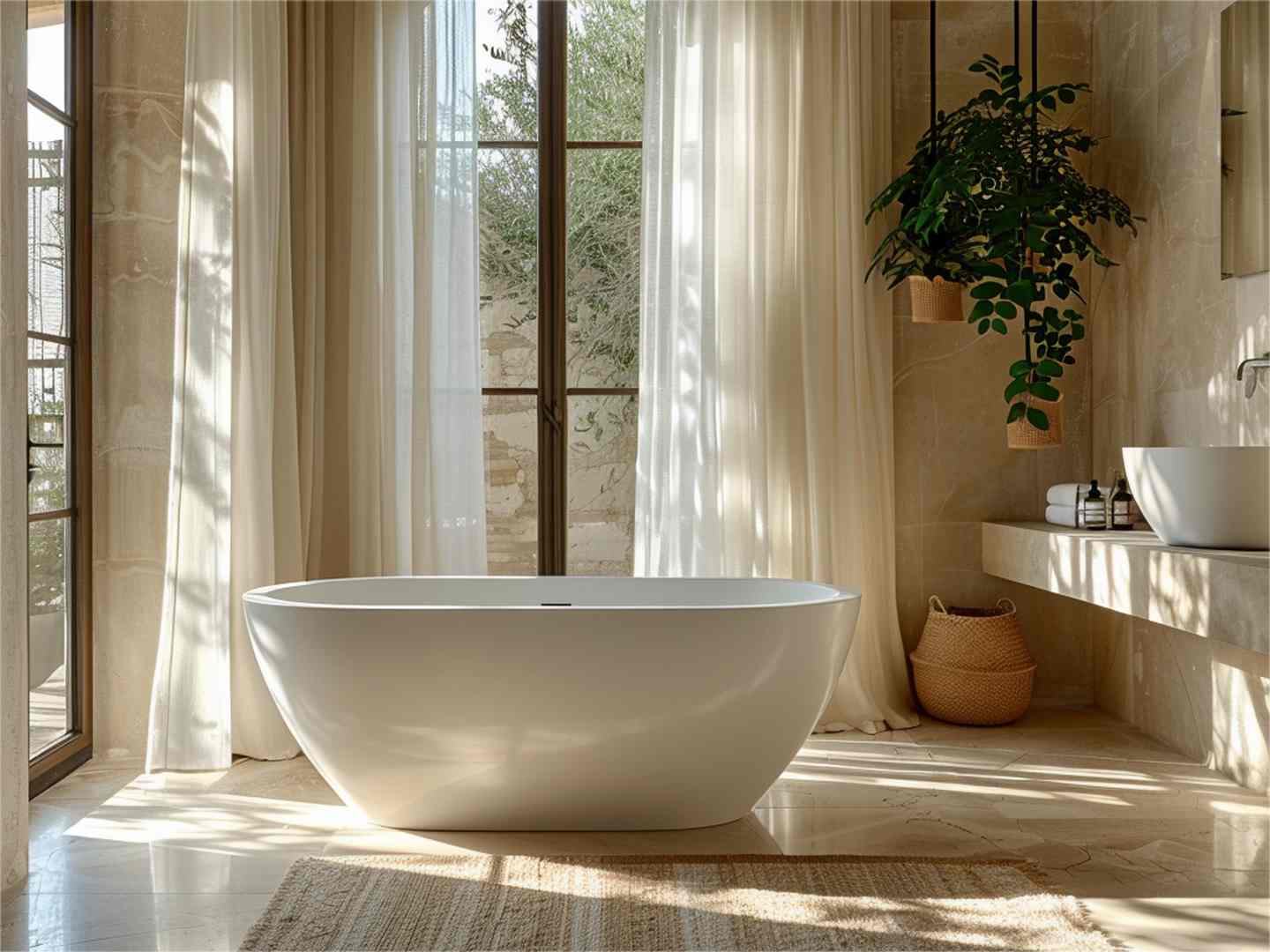
Which Bathtub is the Best Quality?
- Durability:
Cast Iron Bathtubs: Cast iron bathtubs are renowned for their exceptional durability.
These tubs can last for decades, resisting dents, scratches, and scuffs. Although the enamel coating may chip under heavy impact, the robust iron underneath ensures long-term resilience.
Solid Surface Bathtubs: Equally durable, solid surface bathtubs resist chipping, cracking, and scratching.
The uniform composition of solid surface material allows minor surface damage to be repaired easily without noticeable marks, maintaining their pristine condition over time.
- Heat Retention:
Cast Iron Bathtubs: Cast iron bathtubs excel in heat retention, keeping water warm for extended periods and providing a consistently comfortable bathing experience.
Solid Surface Bathtubs: While solid surface tubs also retain heat well, they typically don't match the heat retention capabilities of cast iron.
However, they do heat up faster and offer immediate comfort from the start.
- Aesthetics:
Cast Iron Bathtubs: These tubs often feature a timeless, classic design, making them an ideal choice for those seeking a vintage or traditional aesthetic in their bathroom.
Solid Surface Bathtubs: Available in a diverse range of styles, finishes, and colors, solid surface bathtubs can mimic the appearance of natural stone or offer sleek, modern designs.
This versatility allows for greater customization to match contemporary bathroom designs.
- Weight:
Cast Iron Tubs: The substantial weight of cast iron bathtubs presents challenges in transportation and installation, often requiring reinforced floors to support their heaviness.
Solid Surface Tubs: Though lighter than cast iron, solid surface tubs are still heavier than materials like acrylic.
While easier to install compared to cast iron, their weight must still be considered during planning.
- Maintenance:
Cast Iron Tubs: Enameled surfaces on cast iron tubs are generally easy to clean but can be damaged by harsh chemicals or physical impacts.
Repairs can be more complex and costly.
Solid Surface Tubs: Solid surface bathtubs are nonporous, making them resistant to stains and mold.
They are easy to clean, and minor scratches can be sanded away, simplifying maintenance.
- Cost:
Cast Iron Tubs: Typically more expensive due to the cost of the tub itself and the additional expenses associated with their heavy weight and complex installation requirements.
Solid Surface Tubs: Also on the higher end of the cost spectrum, especially for custom designs.
However, they may offer better value for those seeking specific aesthetic and design flexibility.
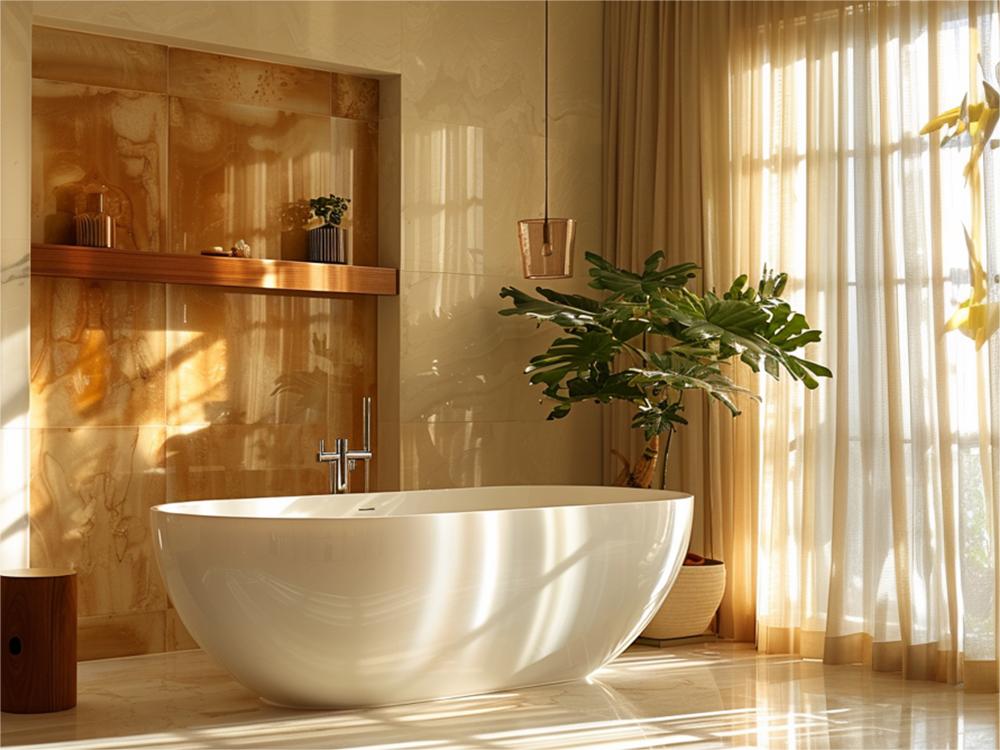
Conclusion
This article examined five critical aspects of solid surface vs cast iron bathtubs: durability, heat retention, aesthetics, weight, and maintenance.
Popularity: Solid surface bathtubs have gained popularity due to their modern aesthetics, customizable options, and ease of maintenance.
Their lighter weight compared to cast iron makes them a more convenient choice for contemporary bathroom designs.
Higher Purchase Rate: Solid surface tubs generally have a higher purchase rate among homeowners looking for versatile, stylish, and low-maintenance options.
Their ability to be customized in various shapes and finishes appeals to a broader audience.
Unusual Choice: Cast iron bathtubs, while less commonly chosen today due to their weight and installation complexity, remain a favorite for those seeking durability and a classic, timeless look.
They are an unusual but valuable choice for luxury and vintage-style bathrooms, adding long-term value and elegance.
Welcome to know more detailed information about products in Cpingao:
